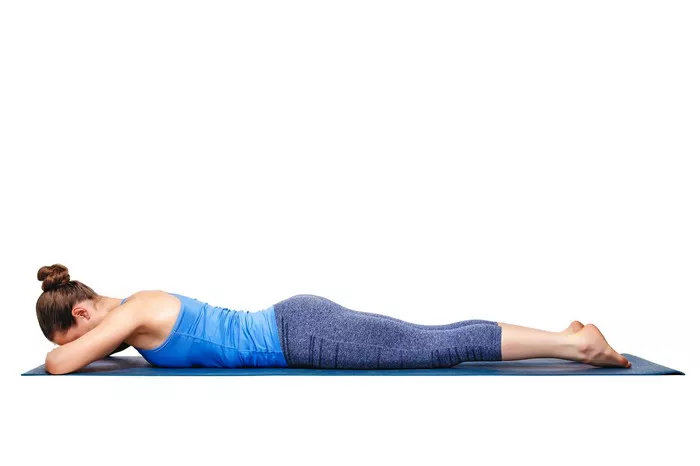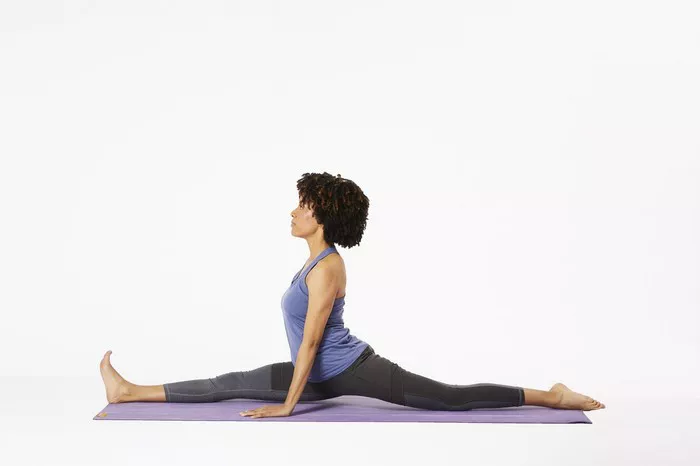Lifestyle diseases, such as heart disease, diabetes, obesity, and hypertension, have become increasingly prevalent in modern society. These conditions are often linked to sedentary lifestyles, poor dietary habits, and high-stress levels. Yoga, an ancient practice, has emerged as a powerful tool in combating these diseases. This article explores the role of yoga in preventing lifestyle diseases, detailing its benefits and how it can be integrated into daily life.
Understanding Lifestyle Diseases
What are Lifestyle Diseases?
Lifestyle diseases are illnesses that result from the way people live their lives. Common lifestyle diseases include:
Cardiovascular Diseases: Conditions affecting the heart and blood vessels, including heart attacks and strokes.
Diabetes: A metabolic disorder characterized by high blood sugar levels.
Obesity: Excessive body fat that increases the risk of various health problems.
Hypertension: High blood pressure, which can lead to heart disease and stroke.
Chronic Respiratory Diseases: Diseases affecting the airways and other structures of the lung.
Causes of Lifestyle Diseases
The primary causes of lifestyle diseases include:
Sedentary Lifestyle: Lack of physical activity and prolonged sitting.
Unhealthy Diet: Consumption of high-calorie, low-nutrient foods.
Stress: Chronic stress contributes to various health issues.
Smoking and Alcohol: Tobacco use and excessive alcohol consumption.
The Holistic Approach of Yoga
What is Yoga?
Yoga is a holistic practice that originated in ancient India. It encompasses physical postures (asanas), breathing exercises (pranayama), meditation (dhyana), and ethical principles (yamas and niyamas). Yoga aims to harmonize the body, mind, and spirit, promoting overall well-being.
The Components of Yoga
Asanas: Physical postures that improve flexibility, strength, and balance.
Pranayama: Breathing techniques that enhance respiratory function and reduce stress.
Dhyana: Meditation practices that calm the mind and promote mental clarity.
Yamas and Niyamas: Ethical guidelines that encourage a healthy and balanced lifestyle.
The Benefits of Yoga in Preventing Lifestyle Diseases
Cardiovascular Health
Reducing Blood Pressure
Yoga helps lower blood pressure by promoting relaxation and reducing stress. Regular practice of asanas and pranayama can lead to significant reductions in both systolic and diastolic blood pressure.
Improving Heart Function
Yoga improves heart function by enhancing cardiovascular fitness. Practices like Sun Salutations (Surya Namaskar) increase heart rate and improve circulation, strengthening the heart muscle.
Diabetes Management
Regulating Blood Sugar Levels
Yoga helps regulate blood sugar levels by improving insulin sensitivity. Asanas like the Shoulder Stand (Sarvangasana) and the Plow Pose (Halasana) stimulate the pancreas, aiding in better glucose metabolism.
Weight Management
Yoga promotes weight loss and helps maintain a healthy weight. Practices like Vinyasa Yoga and Power Yoga provide a vigorous workout, burning calories and reducing body fat.
Obesity Control
Enhancing Metabolism
Yoga boosts metabolism, aiding in weight loss. Dynamic practices like Ashtanga Yoga and Hot Yoga increase metabolic rate, promoting fat burning.
Building Lean Muscle
Yoga builds lean muscle mass, which helps in weight management. Strength-building poses like the Warrior Pose (Virabhadrasana) and the Boat Pose (Navasana) tone muscles and increase overall strength.
Hypertension Management
Stress Reduction
Yoga reduces stress, a major contributor to hypertension. Meditation and pranayama techniques like Alternate Nostril Breathing (Nadi Shodhana) calm the nervous system and lower stress levels.
Improving Circulation
Yoga improves circulation, reducing the risk of hypertension. Inversions like the Headstand (Sirsasana) enhance blood flow and support healthy blood pressure levels.
Respiratory Health
Enhancing Lung Capacity
Yoga improves lung capacity and respiratory function. Breathing exercises like the Bellows Breath (Bhastrika) and the Skull Shining Breath (Kapalabhati) strengthen the respiratory muscles and increase lung capacity.
Reducing Respiratory Disorders
Yoga reduces the risk of chronic respiratory diseases. Practices that focus on deep, diaphragmatic breathing enhance lung health and reduce symptoms of conditions like asthma and bronchitis.
Integrating Yoga into Daily Life
Starting a Yoga Practice
Finding the Right Style
Choose a yoga style that suits your needs and fitness level. Beginners might start with Hatha Yoga, while those seeking a vigorous workout might prefer Vinyasa or Ashtanga Yoga.
Setting a Routine
Establish a regular yoga routine. Aim for at least 30 minutes of practice, 3-5 times a week. Consistency is key to reaping the benefits of yoga.
Yoga and Diet
Eating Mindfully
Adopt a diet that supports your yoga practice and overall health. Focus on whole, nutrient-dense foods and
avoid processed, high-sugar, and high-fat foods.
Hydration
Stay hydrated to support your yoga practice and overall health. Drink plenty of water throughout the day, especially before and after yoga sessions.
Stress Management
Meditation
Incorporate meditation into your daily routine. Even a few minutes of meditation each day can significantly reduce stress and improve mental clarity.
Relaxation Techniques
Practice relaxation techniques such as Savasana (Corpse Pose) and Yoga Nidra (Yogic Sleep) to promote deep relaxation and stress relief.
Yoga Poses for Preventing Lifestyle Diseases
Poses for Cardiovascular Health
Sun Salutations (Surya Namaskar)
Sun Salutations are a dynamic sequence of poses that improve cardiovascular fitness and increase heart rate.
Warrior Pose (Virabhadrasana)
The Warrior Pose strengthens the heart muscle and improves circulation.
Poses for Diabetes Management
Shoulder Stand (Sarvangasana)
The Shoulder Stand stimulates the thyroid and pancreas, aiding in blood sugar regulation.
Plow Pose (Halasana)
The Plow Pose enhances insulin sensitivity and supports glucose metabolism.
Poses for Obesity Control
Boat Pose (Navasana)
The Boat Pose strengthens the core muscles and promotes weight loss.
Warrior III Pose (Virabhadrasana III)
The Warrior III Pose builds lean muscle and boosts metabolism.
Poses for Hypertension Management
Legs-Up-the-Wall Pose (Viparita Karani)
The Legs-Up-the-Wall Pose promotes relaxation and reduces blood pressure.
Child’s Pose (Balasana)
The Child’s Pose calms the nervous system and lowers stress levels.
Poses for Respiratory Health
Cobra Pose (Bhujangasana)
The Cobra Pose enhances lung capacity and improves respiratory function.
Bridge Pose (Setu Bandhasana)
The Bridge Pose opens the chest and increases lung capacity.
Scientific Evidence Supporting Yoga
Research on Yoga and Cardiovascular Health
Studies have shown that yoga can significantly reduce blood pressure and improve heart function. Research published in the Journal of Alternative and Complementary Medicine found that yoga interventions led to reductions in both systolic and diastolic blood pressure.
Research on Yoga and Diabetes
A study published in Diabetes Care found that yoga practice improved glycemic control and insulin sensitivity in individuals with type 2 diabetes. The research highlighted yoga’s potential as a complementary therapy for diabetes management.
Research on Yoga and Obesity
Research published in the International Journal of Yoga found that regular yoga practice led to significant reductions in body mass index (BMI) and body weight. The study emphasized yoga’s effectiveness in weight management.
Research on Yoga and Hypertension
A study published in the Journal of Hypertension found that yoga practice resulted in significant reductions in blood pressure among hypertensive individuals. The research supported yoga’s role in hypertension management.
Research on Yoga and Respiratory Health
Research published in the Journal of Thoracic Disease found that yoga practice improved lung function and respiratory capacity in individuals with chronic respiratory diseases. The study highlighted yoga’s benefits for respiratory health.
Conclusion
The Holistic Benefits of Yoga
Yoga offers a holistic approach to preventing lifestyle diseases. Its combination of physical postures, breathing exercises, meditation, and ethical principles promotes overall health and well-being.
Embrace the Practice
Incorporate yoga into your daily routine to enjoy its numerous health benefits. Whether you are looking to improve cardiovascular health, manage diabetes, control obesity, reduce hypertension, or enhance respiratory function, yoga provides a comprehensive solution.
Final Thoughts
Yoga is more than just a physical exercise; it is a way of life that encourages balance, mindfulness, and harmony. By embracing yoga, you can take proactive steps to prevent lifestyle diseases and improve your quality of life. Start your yoga journey today and experience the transformative power of this ancient practice.
Related topics:
Yoga and Lupus: The Role of Yoga in Managing Lupus
























